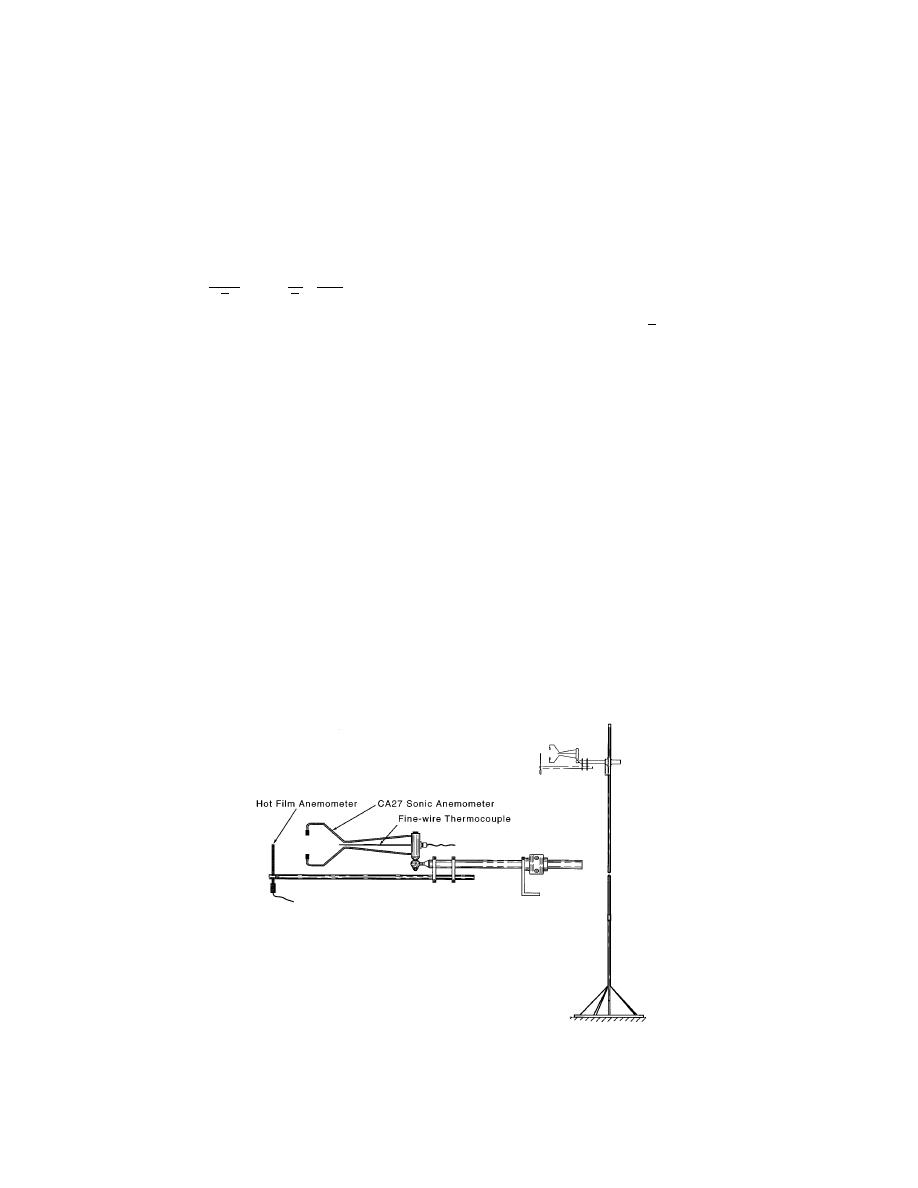
C. Measurement height determination
In addition to determining the frequency limits needed in the integration of eq 62, we still need
to know the height at which the sonic anemometer should be placed. Since a sonic measurement
averages w′ over a path distance between the sonic arms, it is reasonable to assume that the sonic
anemometer should not be placed too near the surface where not only are the velocity and
temperature gradients the steepest but the volume of air over which it is averaging would be far
from homogeneous; therefore, there is a limitation as to how near the surface the sonic anemometer
can be deployed effectively. Kristensen and Fitzjarrald (1984) recommended that the inhomogene-
ity within the sonic sampling volume is minimal if
zπ fd
fz
z
< 1 or
<
,
(64)
u 2πd
u
where d is the length of the sonic path. For the example given above, i.e., for fz / u = 7, then z must
be greater than 14 πd if we are to trust the sonic anemometer measurement. The length of d is
typically 10 or 20 cm, so the magnitude of z should be at least 4.4 or 8.8 m.
D. Field site selection
The horizontal homogeneity of the area upwind of the measurement site is an important factor in
turbulence sampling. To avoid nonrepresentative measurements introduced by internal boundary
layers, the area upwind of an instrument must be uniform for a fetch approximately 100 times the
measurement height. In the example given in section C above, the upwind fetch must be uniform
for a distance of 1400 πd.
V. EXPERIMENTAL
A. Experimental setup
Figure 3 shows the experimental setup. A Campbell Scientific CA27 one-dimensional sonic ane-
mometer (with fine-wire thermocouple) and a hot-film anemometer are linked together and bracketed
to the tower post; they can be adjusted to any desired height but are usually set at 2 m above ground
level. The sonic heads are set 100 cm away from the tower post. The tip of the hot-film anemometer
is positioned at the middle of the sonic path but about 15 cm away from it. The sonic anemometer
has an electronic response of 40 Hz, however, the effective limitation is the loss of response to eddies
Figure 3. Schematics of experimental setup.
16



 Previous Page
Previous Page
